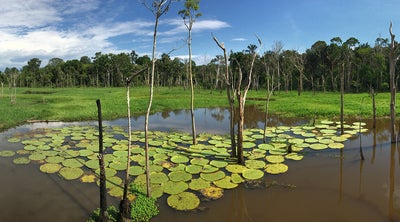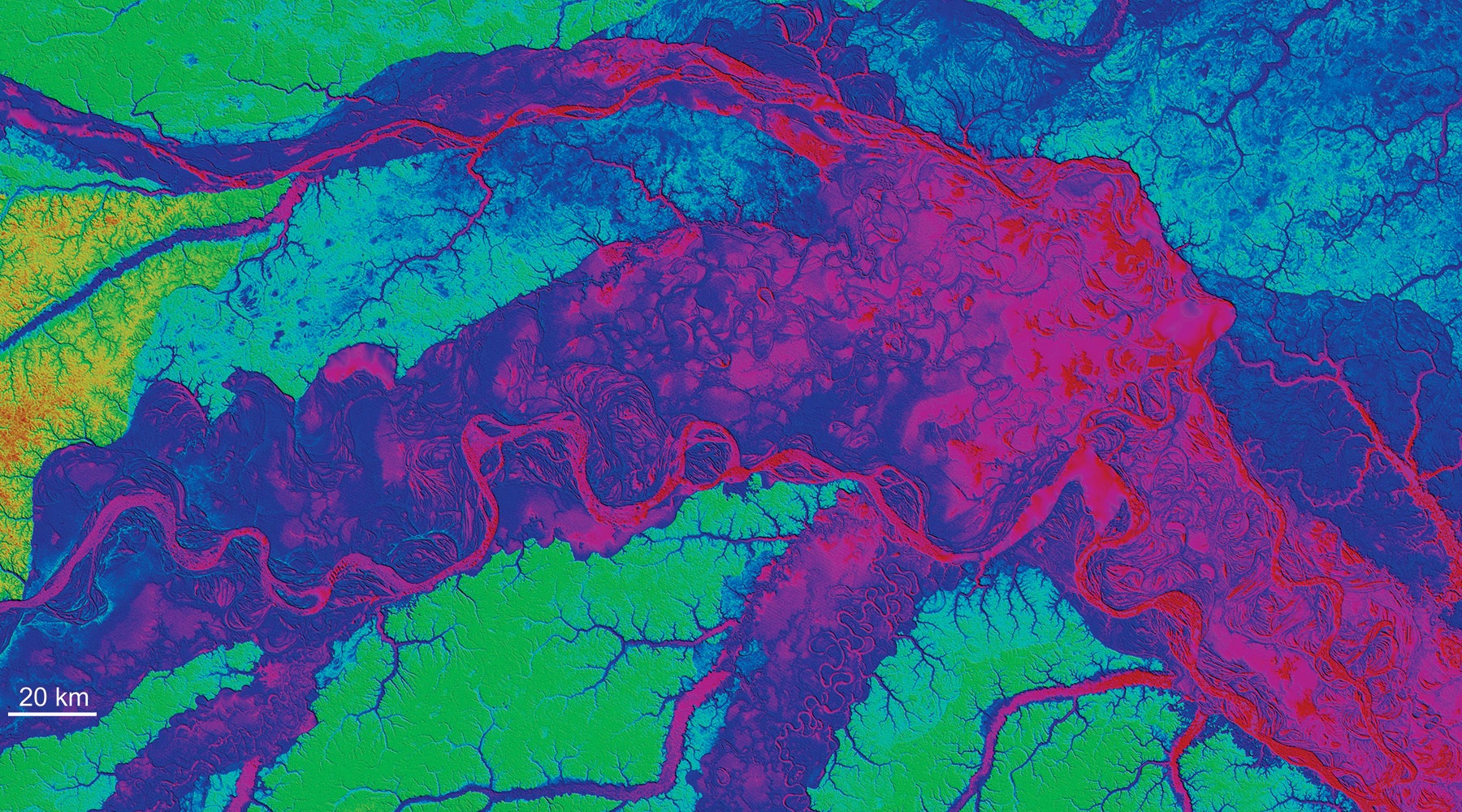 Editor's note: Graduate student Julia Cisneros and Vanessa Gabel are conducting research on the Amazon River with geology professor James Best. Many LAS undergraduate and graduate students conduct research in the field each year. This blog post originally appeared on the Illinois News Bureau's website.
Editor's note: Graduate student Julia Cisneros and Vanessa Gabel are conducting research on the Amazon River with geology professor James Best. Many LAS undergraduate and graduate students conduct research in the field each year. This blog post originally appeared on the Illinois News Bureau's website.
The Amazon, the world’s largest river, is a bewildering array of river channels and connected floodplains supporting the most diverse ecosystem on Earth. This region also exerts a dominant control on the world’s climate. Until about 11 million years ago, the river flowed westward to the Pacific Ocean, but due to the rise of the Andean mountain chain now flows east to the Atlantic.
We’re conducting research in the heart of the Brazilian Amazon, near the frontier town of Tefé, to conduct research on the river, which there is named the Solimões River. We’re going as part of an international project to study the form of the modern-day Amazon River and to learn how it can help us interpret the deposits of such huge rivers within the ancient geological record.
The three of us will work in a field team with professors Renato Paes de Almeida and Bernardo Freitas and two of their graduate students from the universities of São Paulo and Campinas. We’ll be traveling in – and living on – a riverboat during our time there.

James Best
This river is huge – the main channel can be up to 4 kilometers wide and 60 meters deep, and the water level can change by up to 15 meters between low- and high-flow seasons. We surveyed part of the Solimões River in July when the river was high, sailing over sandy river islands and using state-of-the-art geophysical survey techniques to measure the shape of the riverbed, the patterns of flow in the water and the makeup of the sediments in the subsurface.
Now we’re headed back in the dry season, when part of the riverbed becomes exposed, to study what the deposits of these river islands look like – both in recent sediments and those laid down thousands of years ago. In this low-water survey, we’re using more traditional techniques – field examination of exposed sediments, photomontages, field sketches and sampling – to help reveal the secrets of these river sediments.
Our aim is to establish a model for how these sediments evolved through time. The model can help us interpret deposits of other giant rivers locked up in the geological past – such as the rivers of Illinois some 300 million years ago.
The College of Liberal Arts & Sciences at the University of Illinois at Urbana-Champaign offers more than 70 majors and provides a world-class interdisciplinary education that prepares students for lives of impact. Learn more about LAS.